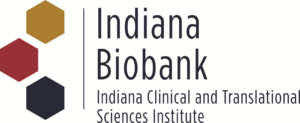
It has been two years since the height of COVID-19, which forced research assistants to leave clinics and have to work remotely. The Indiana Biobank team has been able to thrive during this difficult time and contributed to efficient research.
“In the past two years, we have utilized remote, electronic consent to enroll IU Health patients into the Indiana Biobank,” said Brooke Patz, who is the program manager of the Indiana Biobank. “We have found that this remote enrollment workflow allows us to reach more patients than we could by doing in-person recruitment.”
Since the Indiana Biobank team didn’t see any missteps in production once they switched over to remote work, they were able to help more people than they ever thought possible before. Each year they have provided researchers with more than 4,000 sample collection kits, banks of samples from over 40 different biobanks, support for more than 15 targeted collections, distribution of thousands of specimens and omics data, and are storing thousands of samples for broad sharing.
Additionally, the Indiana Biobank has been able to help several collaborators, utilizing their banking services, convert to electronic consent.
“I believe COVID caused the Indiana Biobank to have to quickly become proficient and comfortable with electronic consenting,” said Patz. “And through this, we have learned how efficient this can be and now prefer to utilize this method of consenting.”
The Indiana Biobank’s ability to work more efficiently through remote consenting has inspired them to continue on the same path and make the consenting process easier for both patients and researchers. The biobank is currently working with IU Health to move towards a self-consenting program called Twistle. Patz said she hopes they can offer their patients the opportunity to text their consent ahead of their visit in the future.
“With Twistle, patients can view the consent or watch the video consent and then are then able to enroll in the Indiana Biobank from their phone,” said Patz. “This will allow us to expand our reach across the state and help us to engage new patients in research.”
